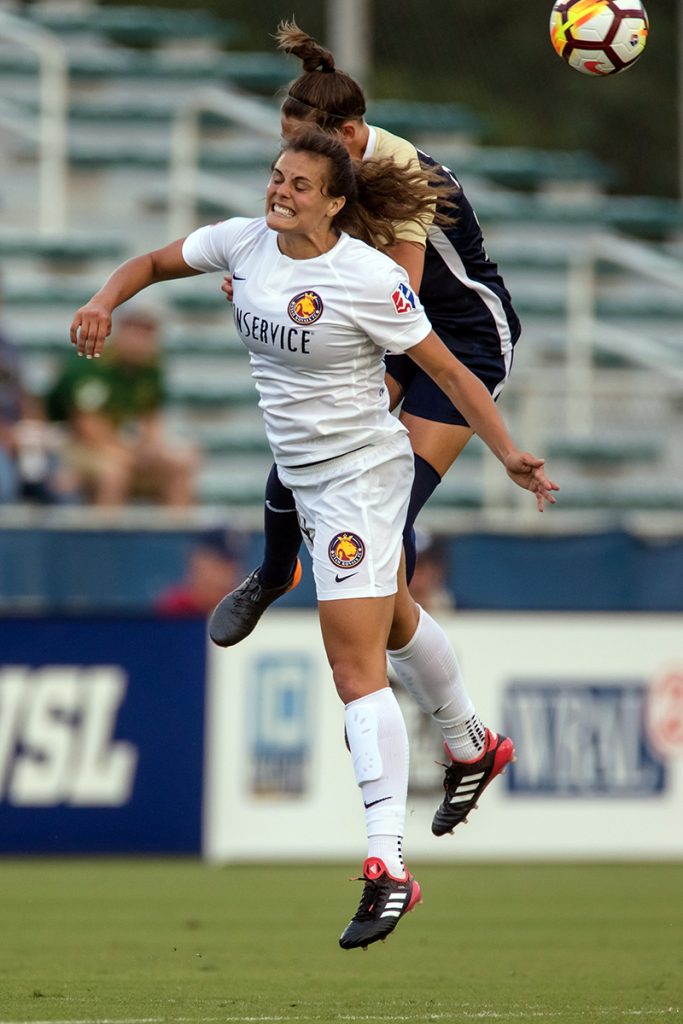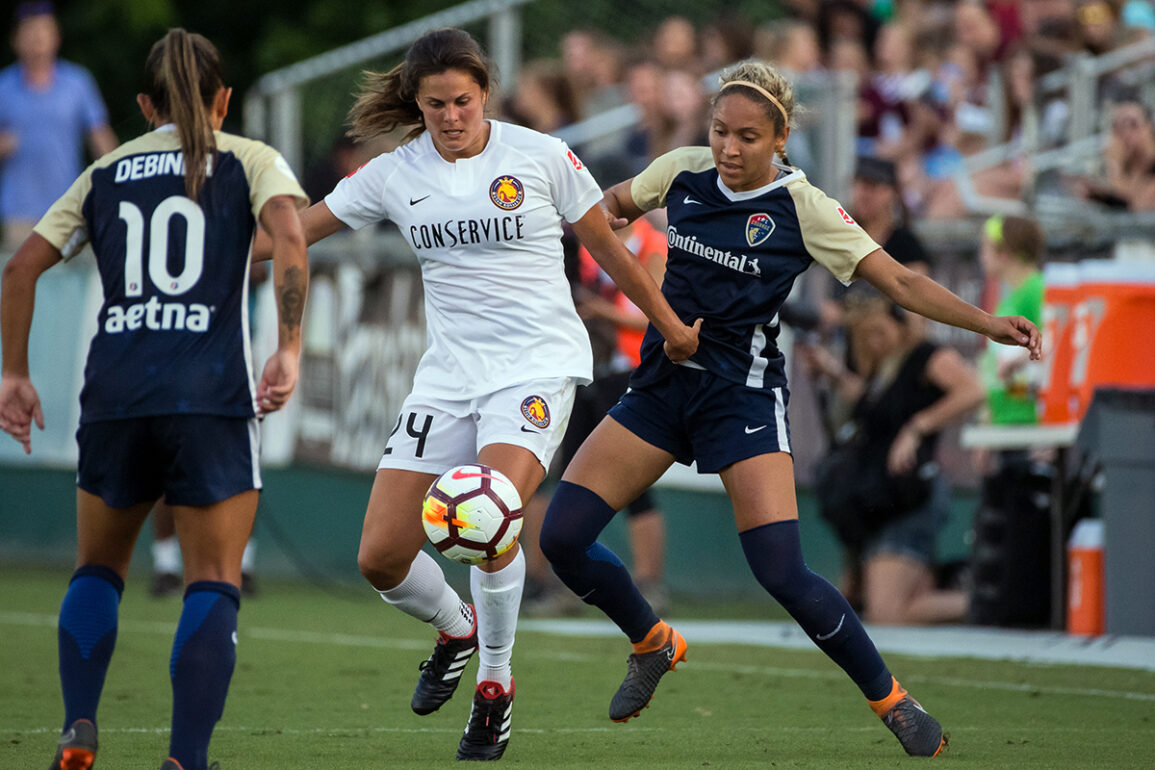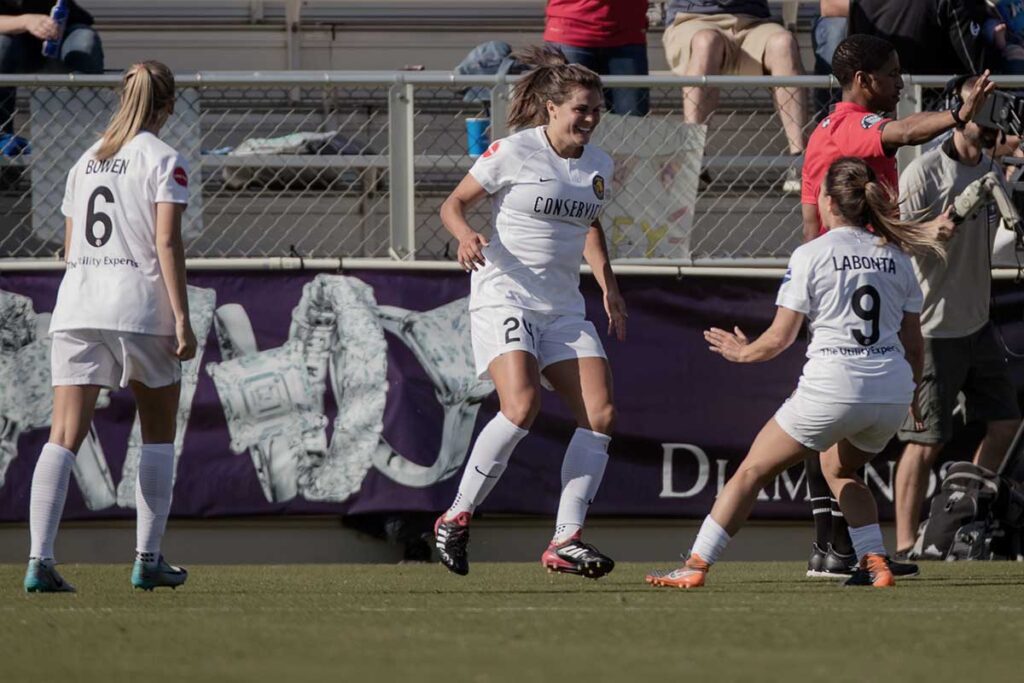Boston Breakers: the longest-standing fully professional women’s soccer franchise in the United States. If anyone hadn’t noticed, they unfortunately are no longer in our league. For some, this came as a shock; for others, it was long rumored that this needed to happen for the betterment of the NWSL as a whole. And so without an investor coming in to save the financially crippled club, the organization ceased operations in January. The Breakers had developed a bad rap for being underfunded, underperforming, and unprofessional. Yet, I found quite the opposite in my short time with the club. There was history and a hard-nosed desire to compete in one of America’s best sports cities. I enjoyed the professional, welcoming environment that I felt from the players, coaches, and supporting staff. While it certainly didn’t provide the gold standard in terms of facilities, I still enjoyed my time there.
In the offseason, there are countless moving pieces. Some players are trying to enter into the league. Other players are working out trades or possible career moves. Coaches are thinking of how best to improve their squads. The NWSL directors are looking to solidify the league in order to continue building upon the foundation we’ve finally been able to sustain for five years. Hence, countless rumors fly around and make it difficult to keep up with big announcements.
I was in Australia at the time and very little information was divulged to the Breakers players and staff regarding our future. We didn’t know what was going to happen with our team until about 36 hours before the public announcement. Like I said, tons of moving parts and factors to consider before the league could make a statement moving forward. Alterations had to be made just weeks before players were to report for preseason. After the whirlwind of the dispersal draft, nearly all of us had found a new home with another team. We were ready to start preseason wherever the wind blew us.
It was one of the biggest displays of professionalism from my teammates — embracing the challenge of breaking into another team, moving their “homes” and the few valuables they’d accumulated, and forgetting about the cannolis from the North End bakeries because life in Boston had ended. The nature of our league is unpredictable to begin with; players can be traded, waived, or signed with as little as a Twitter notification. So everyone is on their toes, ready for the next move in their professional careers. This takes an unbelievable amount of flexibility and versatility. Oh, and nearly every one of us has developed an adept ability to pack, unpack, repack, and transfer our belongings across the country. So after we gathered ourselves and our belongings, we went our separate ways for our next chapters. We thought the biggest change had happened, but man, were we wrong.
Ripple Effect
Boston folding caused a ripple effect throughout the NWSL that drastically changed the dynamic of the league. The NWSL had lost a team, but still had the same number of players who were to compete in the same number of games.
I’ll clarify for those non-math nerds: nine is an odd number. Therefore, each week one team has to be the odd man out and have a bye weekend. So the scheduling of the games became much more complicated in order to get each team to their 24-game requirement. After several drafted schedules, the NWSL and coaches came up with our current calendar, one that included the dreadful midweek game.
Midweek games are tough. For one, they throw off the typical training schedule and loading. In general, you can’t train too hard the day before and after a game. You also need a day off in the training week. And let’s not forget traveling days. Thus, a Saturday game would entail training Monday, Tuesday, Thursday, and a light Friday session, then recovery on Sunday and the aforementioned off-day on Wednesday.
However, when a Wednesday away-game gets thrown into the mix, we get all discombobulated. (We’re not all fresh spring chickens who can play four games in a weekend.) Now training days turn into a mixture of recovery, tactical sessions, and just a bit of fitness to keep us sharp, then repeat for a game three days later. If travel is required, that will take its toll. Our legs kinda get a little tired after 90 minutes, then a four-hour flight home, terrible sleep, and then another 90 minutes two days later.
I don’t see how else the league would have been able to fit all the games into the given time frame after factoring in FIFA dates and the bye weekends. So we adjust our training and figure out how to handle the quick turnarounds while also putting together an entertaining performance each game. This is no small feat for our feet.
If anyone has noticed the frequent starting lineup changes this year they might wonder why. The frequency of games plays a role here, but the biggest factor is the competitiveness in the rosters — there are so many players on the team who deserve minutes. The coaches’ hardest job may be managing so many talented players and putting together their best 11s. Coaches have to consider who complements whom, what type of player fits best into the game plan for each opponent, and what players have proven themselves in training. Players all go through highs and lows. They aren’t always playing at their highest potential and some players just get into a groove and mesh with the given lineup. What do you know, moving parts. To determine the best lineup for a game, many factors must be considered. Does player A prefer to run in behind a high defensive line, or play to feet in front of the back line? Does player B read Player A’s movement and play well in tandem with her? Has Player C proved herself in this week’s training?
There are so many aspects to the game that go into lineups that I’m glad I’m not a coach. And now that there are multiple Player As in every position, the choices become that much harder.
It’s a catch-22: Coaches have more options this year, but also many tough decisions because of the depth in the rosters. And Boston players were shuffled around to teams with already full rosters.
Mental Jungle Gym
When a team folds, all 20 players suddenly become homeless. No, seriously. We legit didn’t have a place to stay and I couldn’t even give a home address for my visa paperwork. It’s quite humbling, really. Fortunately, the Boston dispersal draft allowed coaches to bolster their rosters with the leftover kids. (Thank you, Laura, for giving me my new favorite home!) The rules that were drawn up also implied that we had a sort of immunity. A little, much appreciated, job security was given because the Boston draftees didn’t count toward the salary cap or roster cap, but if they were cut the team couldn’t use the open roster position. In lamest terms, we were a “free” extra player as long as the new club could afford to keep us around. That is very rare in this league because players can be traded or waived at the drop of a hat. Sounds great, in theory.
In reality, this added on average three extra players to already competitive rosters. Oh, and don’t forget about the college draft girls and sudden influx of many talented internationals. Suffice to say, nine teams now had more than two full, 11-a-side teams. Woo hoo! We can intersquad with all rostered players. (Note: Coaches, please don’t make us do that all the time, nobody likes it.) So now there are even more talented players on each team competing for playing time.
 This packed competitive roster leads to a lot of changes to lineups, which, in turn, causes players to fluctuate between starting, getting a few last-three pity minutes, not dressing, or scoring the game-winner. Talk about a mental jungle gym. The rosters also make it exponentially difficult for players on the cusp of being rostered. I can’t tell you how many times I’ve witnessed good players who just can’t find their niche in this league, players who have recently been drafted or caught in trades suddenly have a very different challenge. They deserve to be playing somewhere, but a coach may prefer a different type of player, or the team they’re trying out for already has three players in their position.
This packed competitive roster leads to a lot of changes to lineups, which, in turn, causes players to fluctuate between starting, getting a few last-three pity minutes, not dressing, or scoring the game-winner. Talk about a mental jungle gym. The rosters also make it exponentially difficult for players on the cusp of being rostered. I can’t tell you how many times I’ve witnessed good players who just can’t find their niche in this league, players who have recently been drafted or caught in trades suddenly have a very different challenge. They deserve to be playing somewhere, but a coach may prefer a different type of player, or the team they’re trying out for already has three players in their position.
You can see how these players could be discouraged because it’s so hard to compete when the odds are stacked against you. They used to have to compete against about two other players in their position, but now it’s more like three and sometimes four challengers. I see this as a positive because it shows the growth in our league, but it’s also heartbreaking to see good people struggle to make a name for themselves here. Competition is good and brings out the best in people, so hopefully it only strengthens our league. This season, rosters are arguably the deepest in NWSL history and that cultivates a powerful playing environment week in and week out.
I don’t want to speculate too much but it’s hard to miss the fact that there have been an astounding number of ties this year. Utah Royals are certainly making a claim for most ties in a season. And we totally mean to, we’re just waiting to pull away with all wins. Just you wait.
My little theory is this: The competition is fierce. I’m talking Tyra Banks smize fierce. When a stud like Alex Morgan goes up against an immovable force like Becky Sauerbrunn it’s gonna be an epic clash of talent. When you have equal matchups all over the field and then fresh legs from a deep bench, a staggering number of stalemates will occur. The level of soccer has gone up, players are smarter, and there are so many special players in every position this year, it’s created a tough environment for one team to dominate another. Teams are relying on good defensive shape and their talented offensive personnel to win games. However, when both teams have that talent and structure, it becomes extremely hard to break each other down and break through.
Just as players performance fluctuates, so too does a team’s. Therefore, we’ve seen a few teams, Seattle, for example, pull away with dominate performances despite a competitive opponent. Credit to them, they’ve seemed to figure out a loophole in my hypothesis. The chances they’ve created and their ability to move the ball quickly have proven problematic thus far. However, more often than not teams have limited counterattacking chances and force each other to attempt to score in the run of play. As teams become more comfortable and start to gel more, I see more goals being scored. This may be simply due to the number of scoring opportunities increasing or coaches figuring out their best 14 for each respective opponent. The overflowing talent in each team’s practices will lead to an even higher level of play. If teams play with a cohesive style in which players work off each other and for each other, they are bound to create more chances. Maybe this is my offensive mindset overruling the obvious defensive pressure, but I believe the forwards will pull away here. I mean, we have Lynn Williams’ pace, Alex Morgan’s deceptive runs, and Megan Rapinoe’s classy finishing all working in our favor.
[dropcap]M[/dropcap]y hope is that we all see this Boston change-up as a positive. Obviously losing a team is never easy. It’s like breaking up with your long-term boyfriend (something I’m certainly no expert on), but you have to look back on the good times, while growing from the experience. Our league has become less diluted, more demanding, and players are fighting even harder for playing time. Perhaps the increased supply of potential starters will neutralize the demand of two-game weeks because teams have to adjust lineups to keep fresh legs. Perhaps that extra competition improves the training ground so as to develop even smarter, craftier players. Then, the overall team standard progresses and the entire league raises the bar. That should be our ultimate goal: to bring about our best soccer by rising to the challenge and surpassing our potential.
Our league has proven time and time again that we’re getting 1% better everyday. As my favorite athlete MJ once said, “You have competition every day because you set such high standards for yourself that you have to go out every day and live up to that.” We have raised our standards in this league and that has only #blessed us with some of the most competitive matches in women’s soccer history. So, thank you, Boston, for your incredible legacy and lasting influence on the NWSL. You may not be listed on the calendar, but your significance is still felt on every team and every player in this league.


